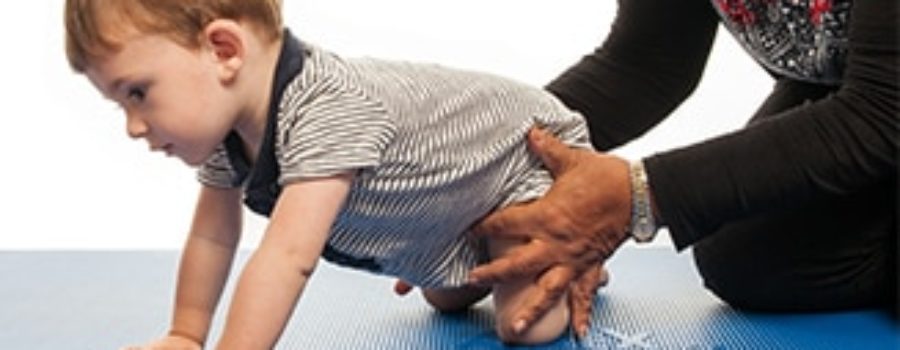CHILDREN WITH CEREBRAL PALSY
During her career, Farshideh has treated many children with cerebral palsy (CP). CP is the most common neurological disorder found in children. It is a term used to describe a group of disorders, affecting the development of movement and posture, which are believed to arise from non-progressive disturbances in the developing foetal or infant brain. The causes of such disturbances may, or may not, be apparent.
CP neurological disorders range from very mild to very severe and are varied in nature. Each case will be classified as one of:
- Spastic CP – stiff, permanently contracted muscles – 50–75% of cases. This may be further sub-classified into the following:
- Diplegia – affecting either both arms or both legs
- Hemiplegia – affects limbs on only one side of the body
- Quadriplegia – affects all four limbs
- Monoplegia – impacts on one limb (extremely rare)
- Triplegia – affects three limbs (extremely rare)
- Ataxic CP – poor co-ordination, balance, depth perception – 5-10%
- Athetoid (or Dyskinetic) CP – slow, uncontrolled writhing movements – 10-20% of cases
- Mixed CP – a combination of the above – 10% of cases
In addition to the motor disorders that characterise CP, children with CP may display epilepsy, secondary musculoskeletal problems, and disturbances of sensation, perception, cognition, communication, and behaviour.
Diagnosis is typically made by reference to motor skills and medical history. Symptoms are likely to include:
- unnaturally soft, relaxed, or floppy muscle tone – called hypotonia
- muscle tone that is stiff or rigid – hypertonia
- unusual posture – asymmetric crawling, failure to crawl or favouring one side
- growth disturbance, especially failure to thrive
- signs of hand preference before the age of 1 year – infants usually do not display a tendency to use either the right or left hand during the first 12 months of life. CP infants often develop hand preference early, indicating one side of their body is stronger than the other
Other conditions that can be linked to CP include seizures, mental impairment, and vision or hearing problems. Intelligence tests are often administered to a child with CP but the results can be misleading – a risk of underestimating intelligence – as a child with movement, sensation, or speech problems will have difficulty performing well on such tests.
Physical therapy should begin soon after a CP diagnosis is made. Treatment is initially aimed at improving infant mobility, giving family support, providing parental education, as well as at promoting sensory and motor developmental skills. Over time, the focus of therapy will gradually shift towards activities associated with daily living and communication, such as the child’s ability to sit, move independently, and perform tasks such as dressing, writing, and using the bathroom plus addressing difficulties arising through contact with with the outside world – school, shopping, entertainment, work and so on.
It is vitally important for a child to perceive therapy as play – having fun and being creative stimulates children into exploring their own environment. An empowered child will be confident in trying new movements. If therapy is felt to be chore, the child will not participate and progress will be slow, creating anxiety for all! Therapy may include some or all of the following elements:
- the use of age appropriate play and toys and games based on the desired exercises
- strengthening the extensor groups of muscles to promote standing
- postural and motor control training is important and should follow the developmental sequence of normal children
- head and neck control, trunk and pelvis control and mobility as well as strength should be achieved as much as possible
- monitoring the development of eye tracking and vestibular training to help with standing and movement
- developing hand and eye co-ordination as well as improving hand function to assist with educational needs
- working on static and dynamic balance – sitting balance, sitting to standing and balancing and walking on different surfaces to function in multiple environments
- referral for orthotics – casting and splinting to maintain functional joint position in the upper and lower extremities – may be useful
Therapy must be tailored to each child’s developmental age and adaptive equipment may be useful in helping a child be more independent and empowered. Such aids range from simple Velcro shoe straps to motorized wheelchairs and computerized communication devices. Computers can transform the lives of children with CP – they can give a child unable to speak or write the power of communication using nothing but simple head movements.
Prognosis: a diagnosis of CP for your child may be unexpected and seem daunting. It is important for you to be aware that, in our experience, children are resilient and robust in adapting to their own physicality. Physical difficulties that initially seem insurmountable can be reduced to manageable proportions.
With support and therapy, the good news is that most children with CP will learn to manage their condition – a condition that is ‘normal’ to them – and they will experience a good quality of life just like the rest of us.
We believe that therapy which engages and empowers any child with CP, including those severely affected, will improve the life quality of that child and be of value to involved parents.
Please contact us to discuss your own circumstances if this is of interest to you.





Leave a Reply
Your email is safe with us.
You must be logged in to post a comment.